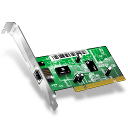The simple way to install grub/ grub2 from any linux live-CD or any other bootable medium.
Step 1: boot from linux live CD/DVD or even USB
Step 2: mount your hdd
Step 3: chroot in the mounted filesystem
Step 3: install grub
Step 4: reboot
1 2 3 4 5 6 7 8 9 | fdisk -l mount /dev/sda1 /mnt/ mount -t proc none /mnt/proc mount -o bind /dev /mnt/dev mount -t sysfs sys /mnt/sys chroot /mnt/ /bin/bash update-grub /usr/sbin/grub-install --recheck --no-floppy /dev/sda sync & reboot |
SUSE Syntax:
update-grub is debian and ubuntu little helper this execute the same as:
1 2 3 | grub2-install --recheck --no-floppy /dev/sda grub2-mkconfig -o /boot/grub2/grub.cfg mkinitrd |





